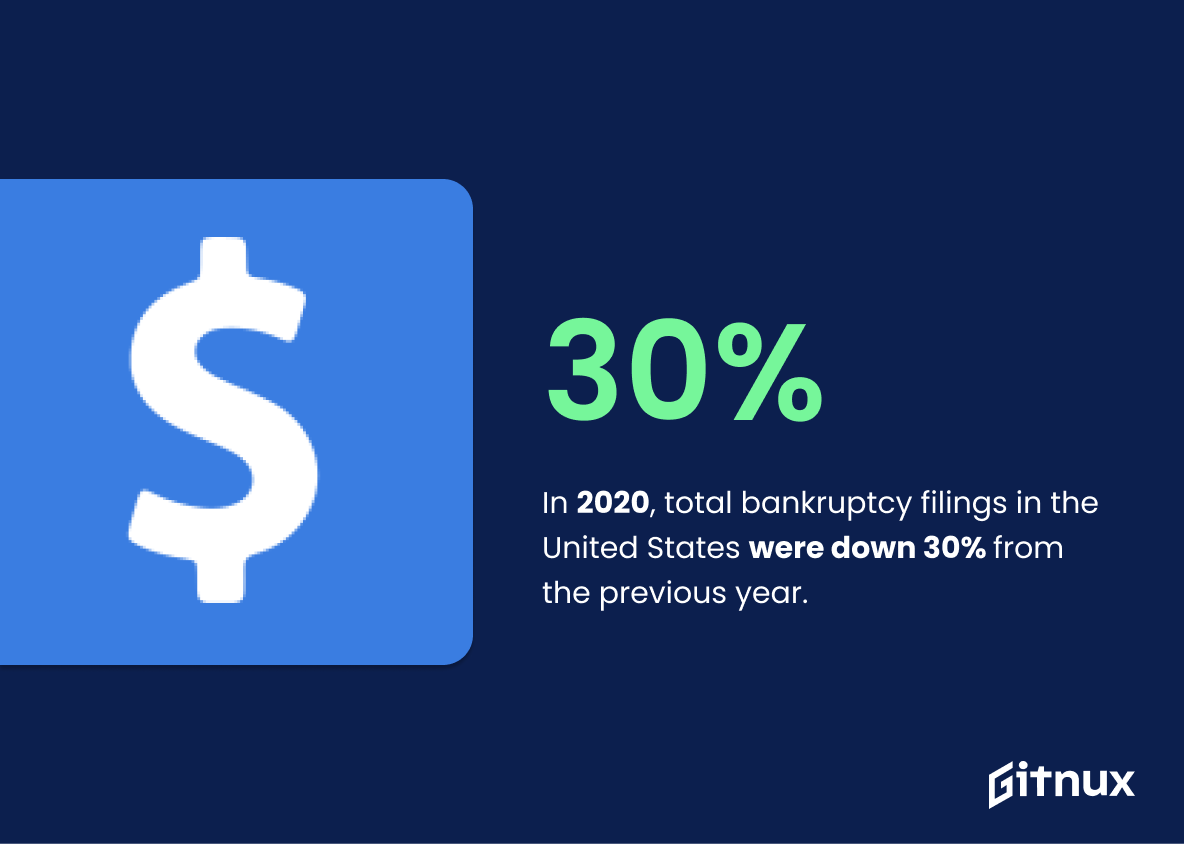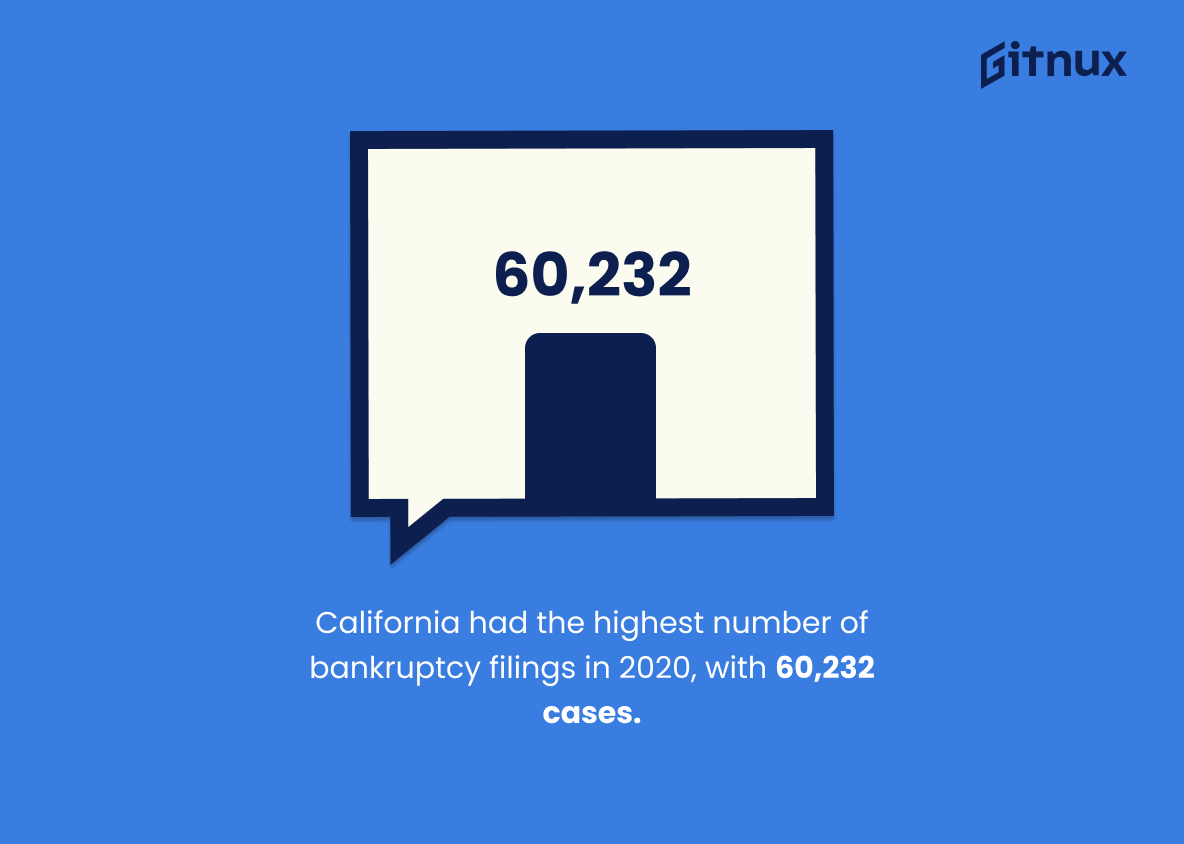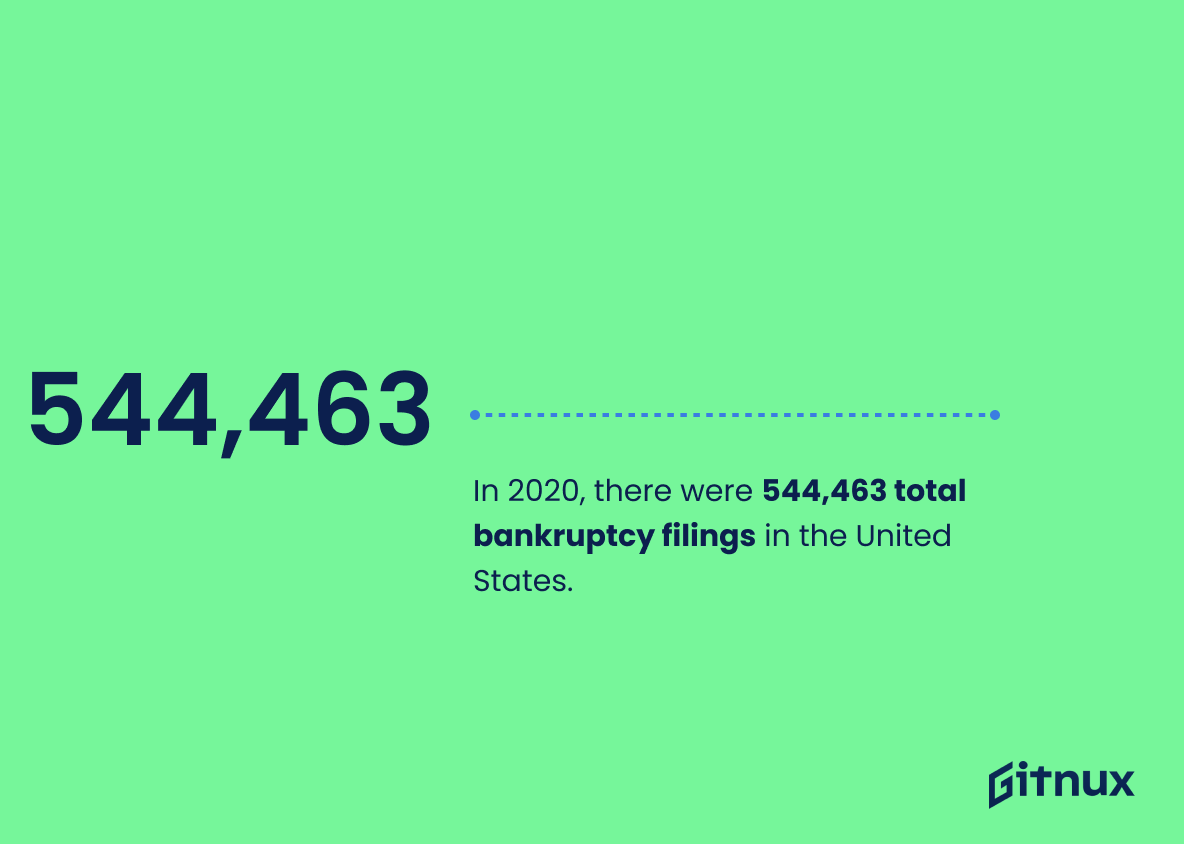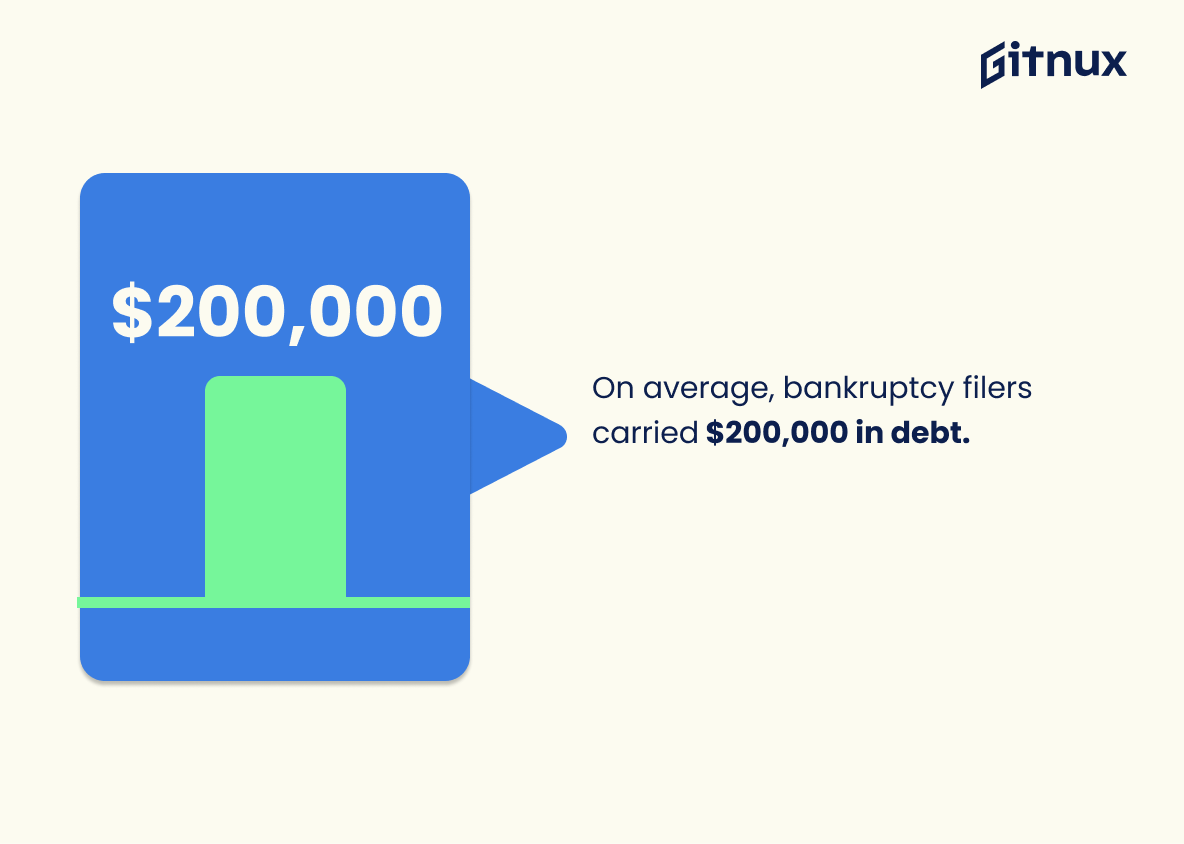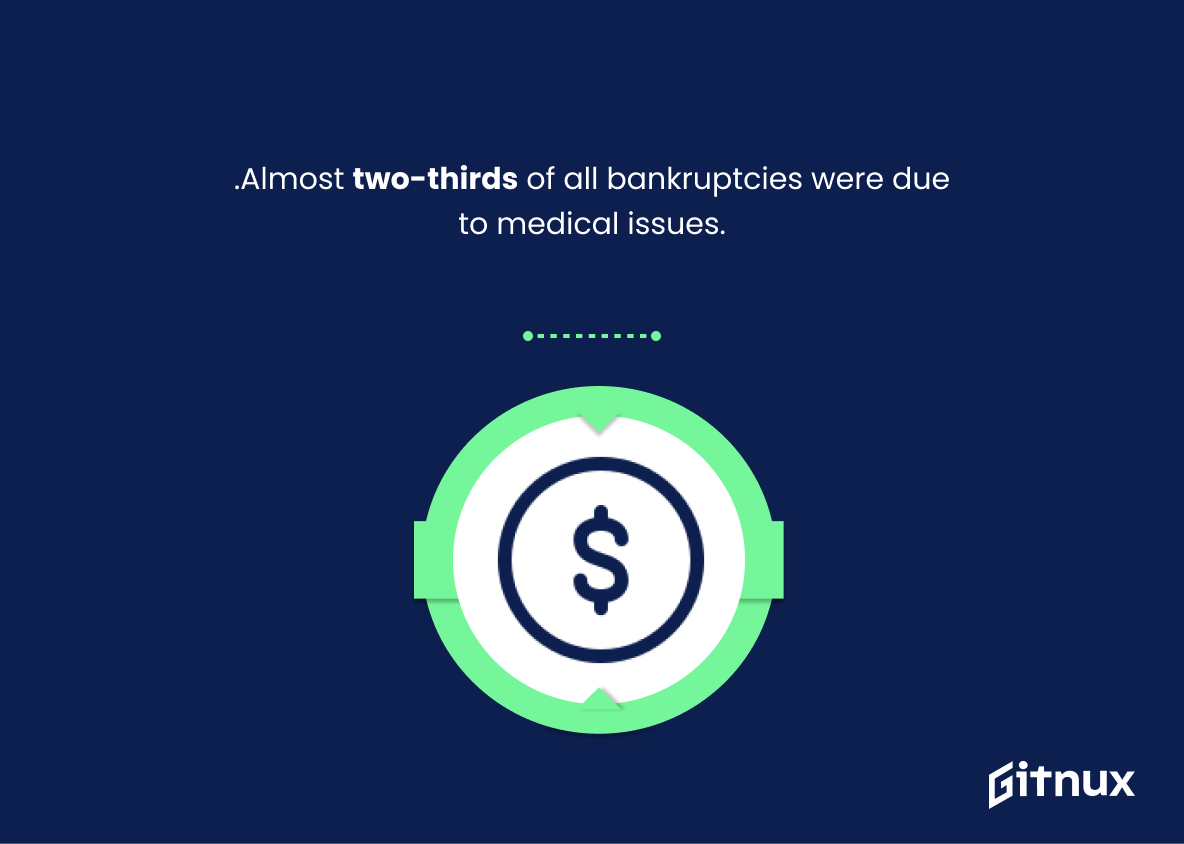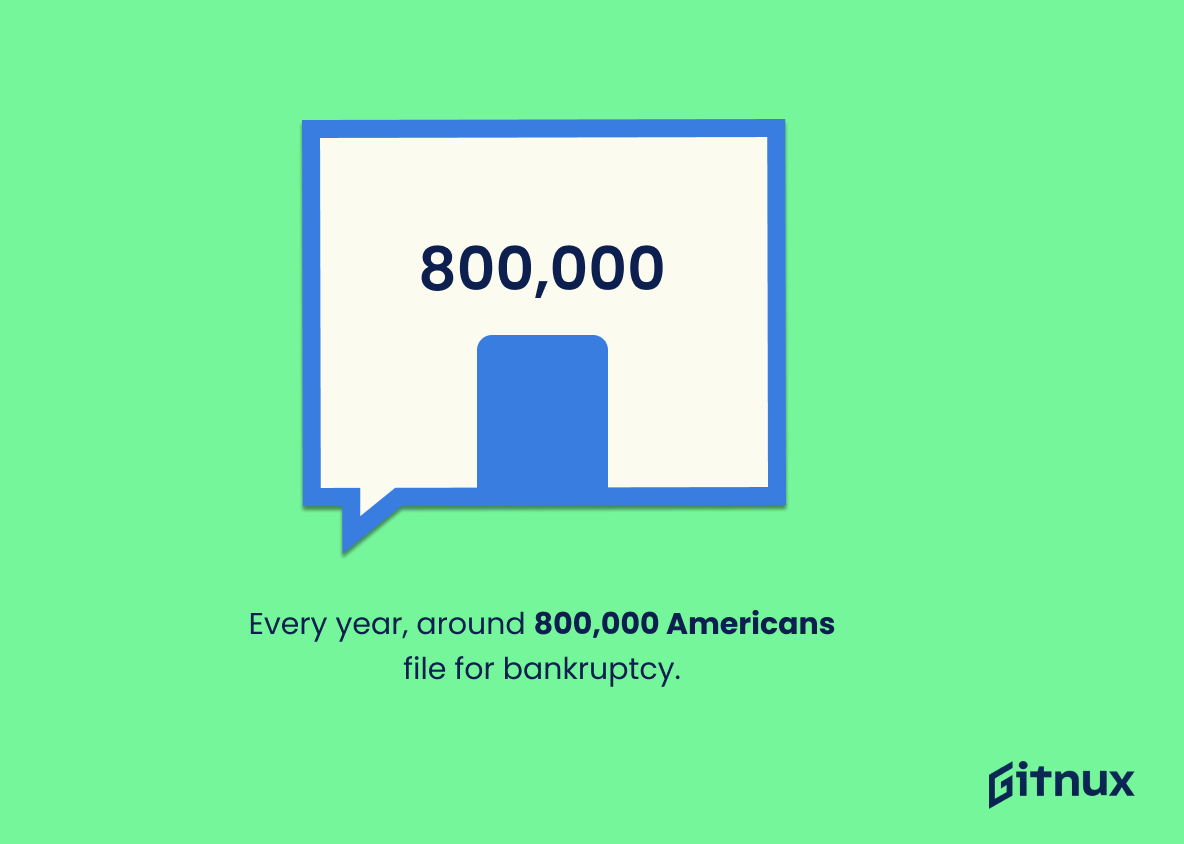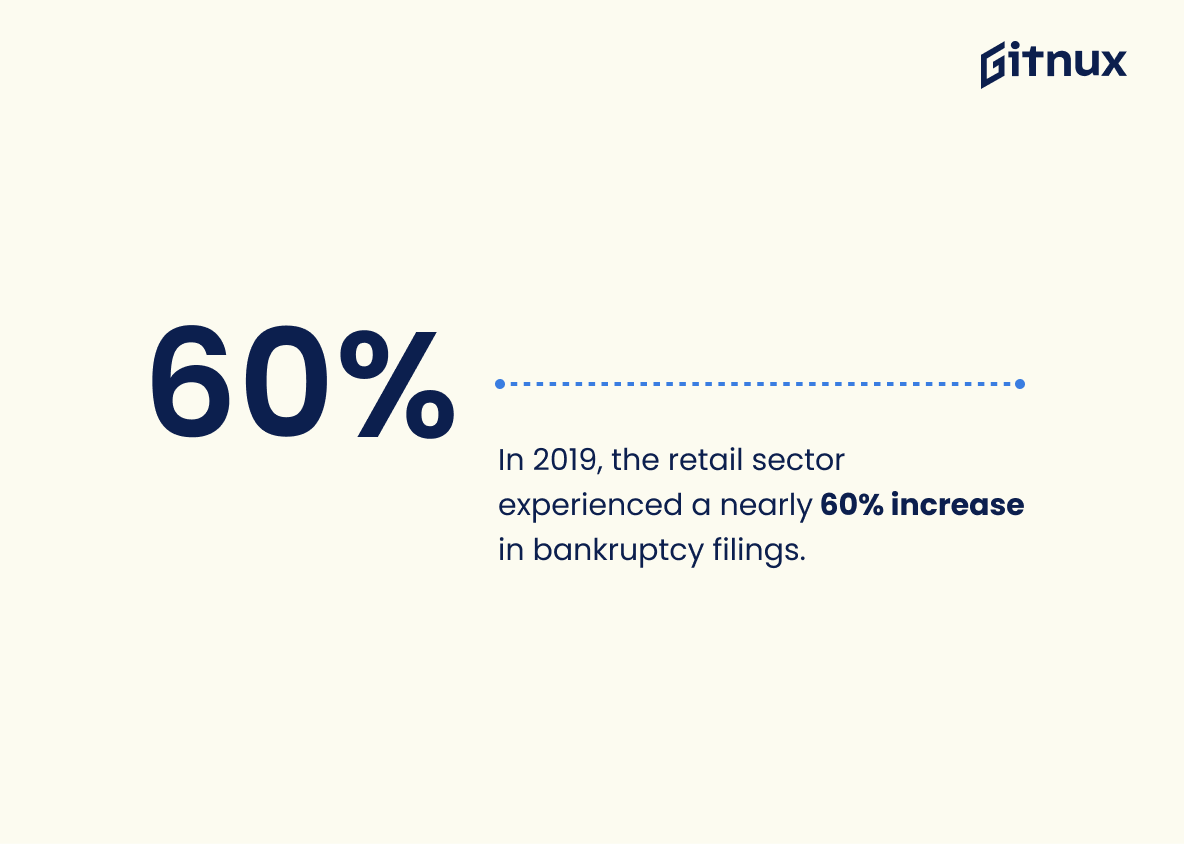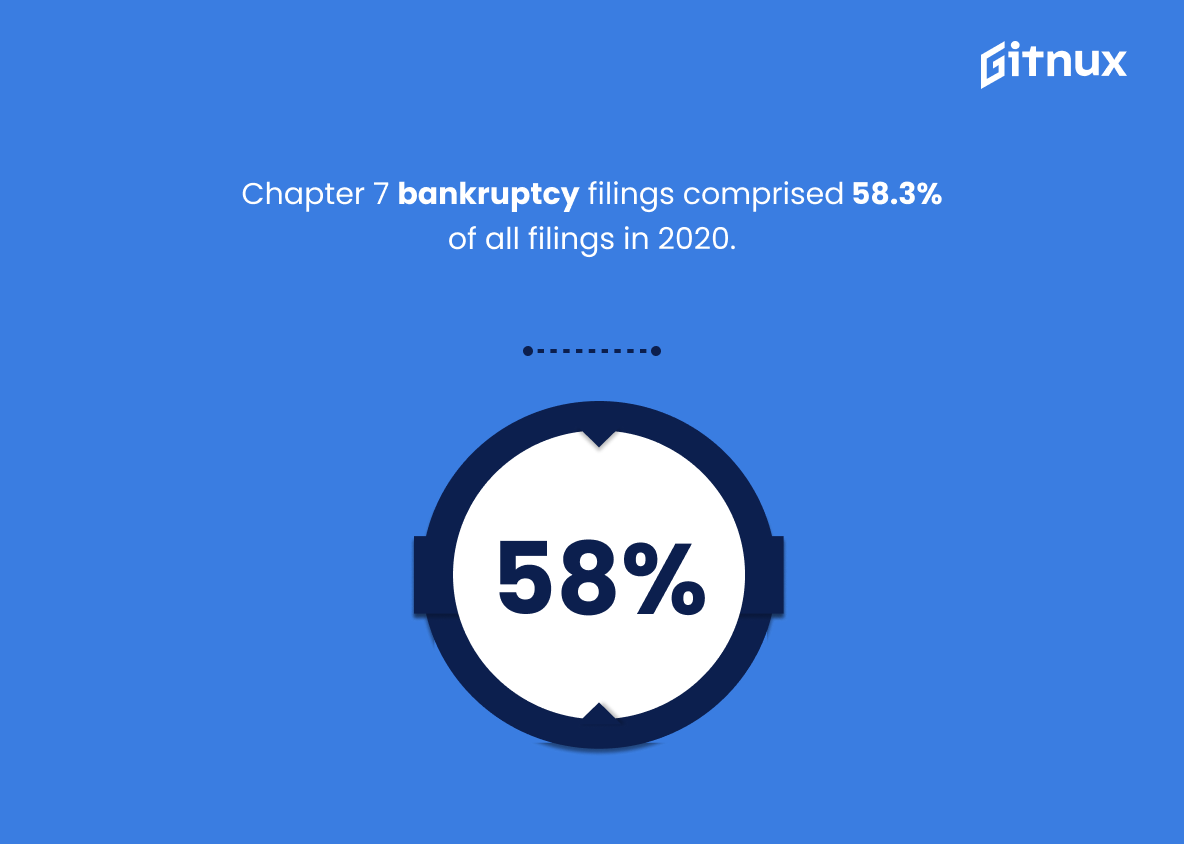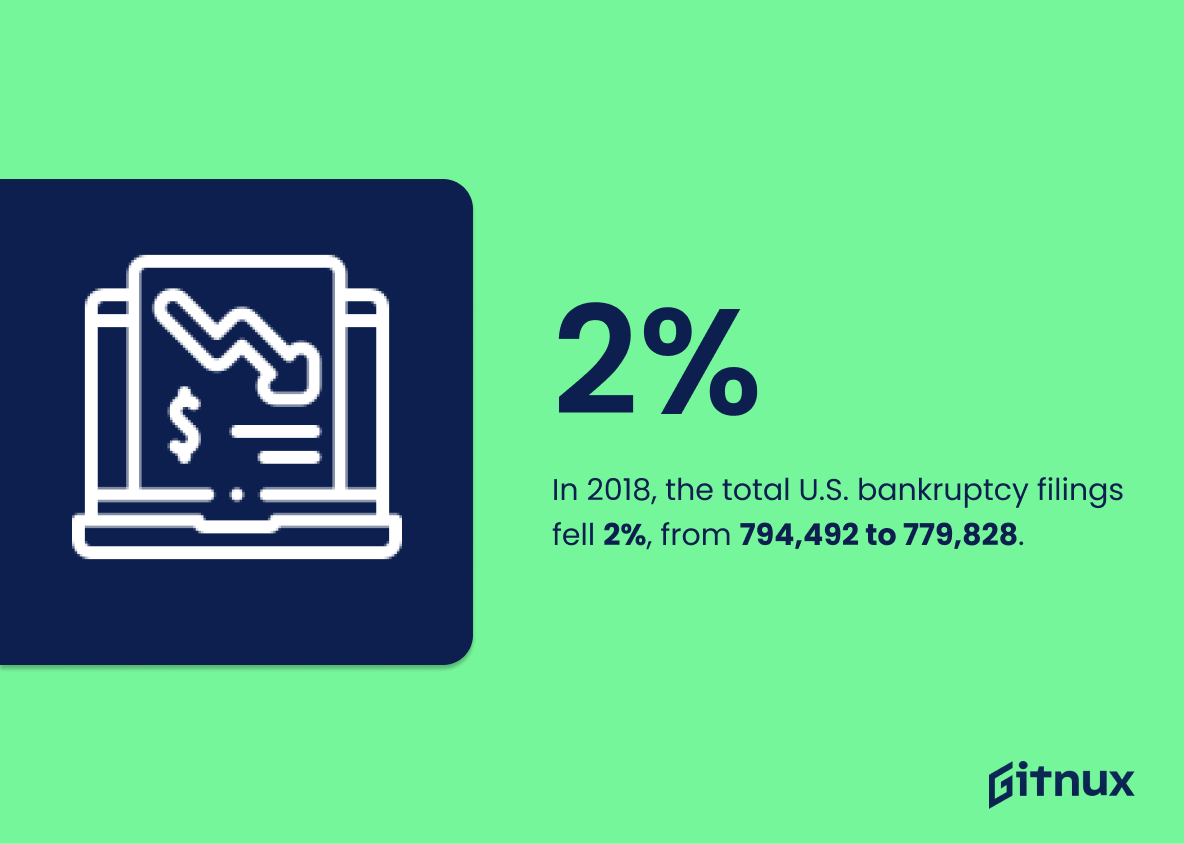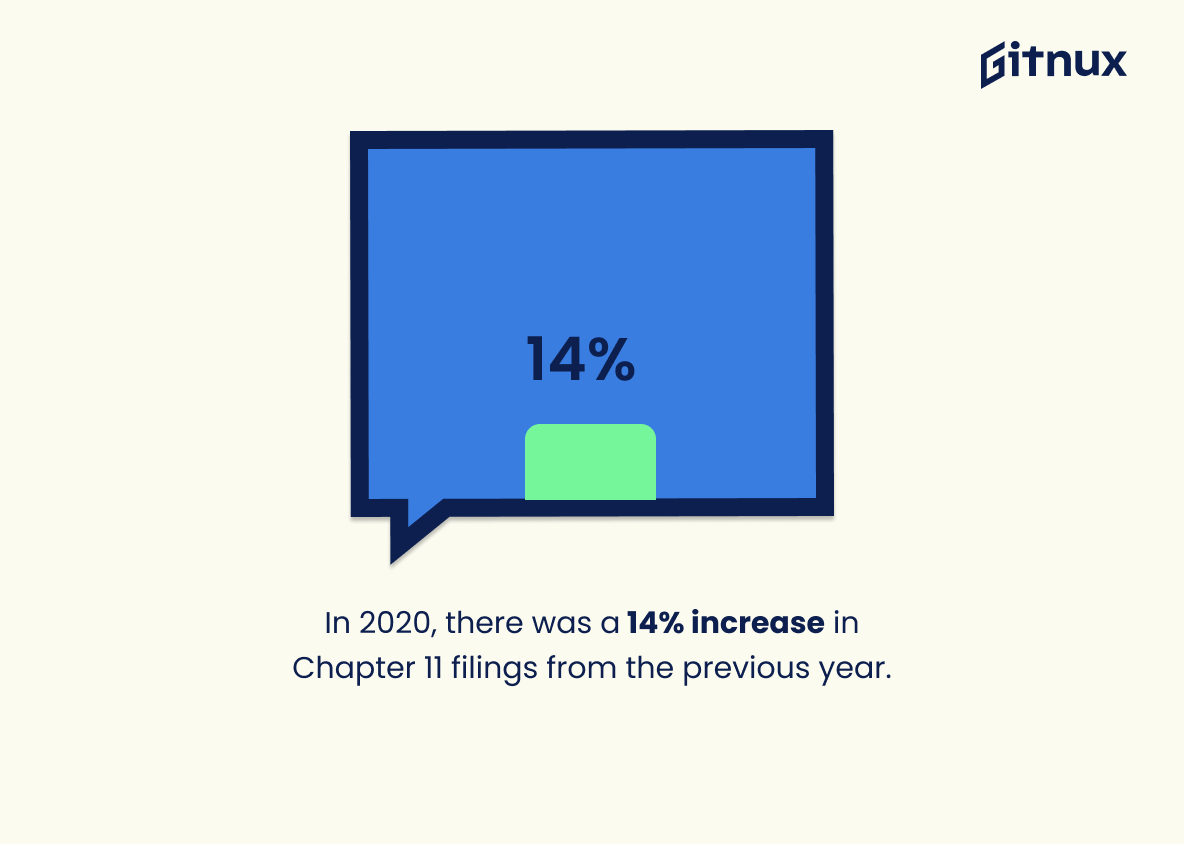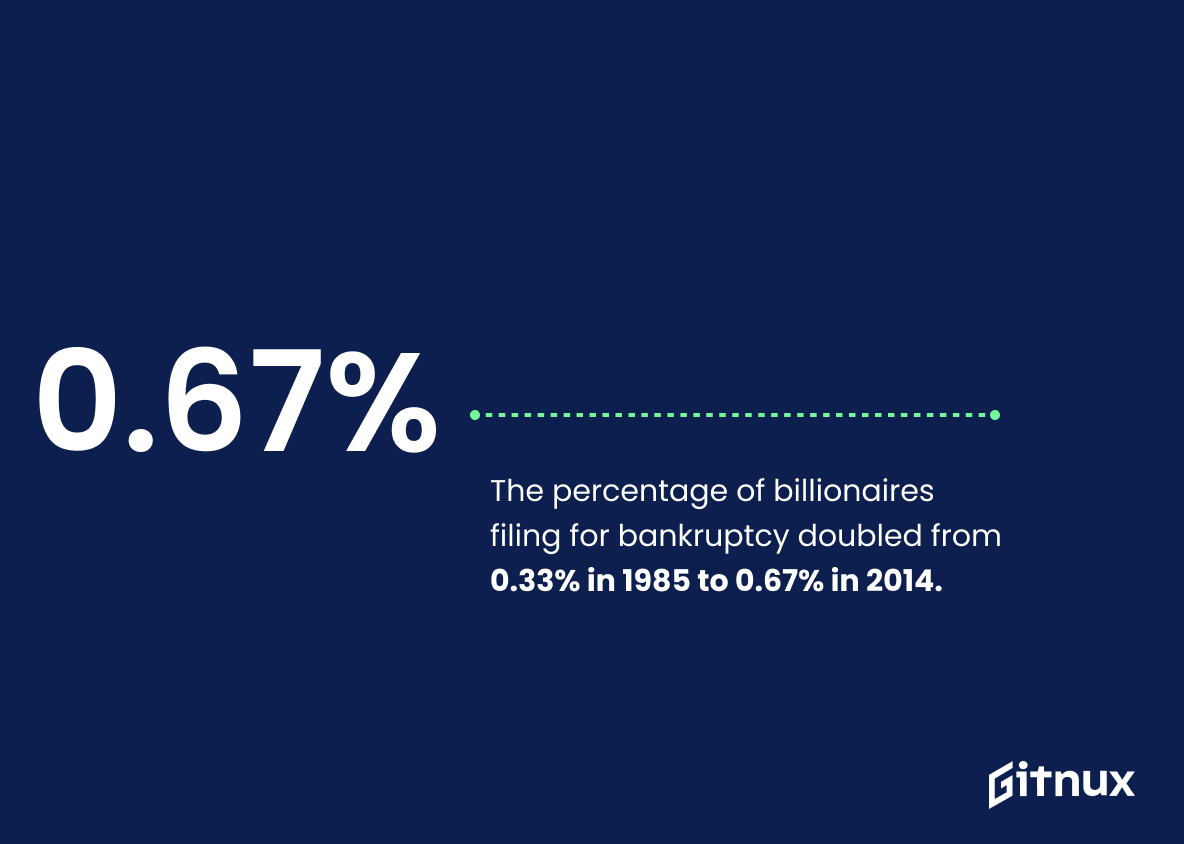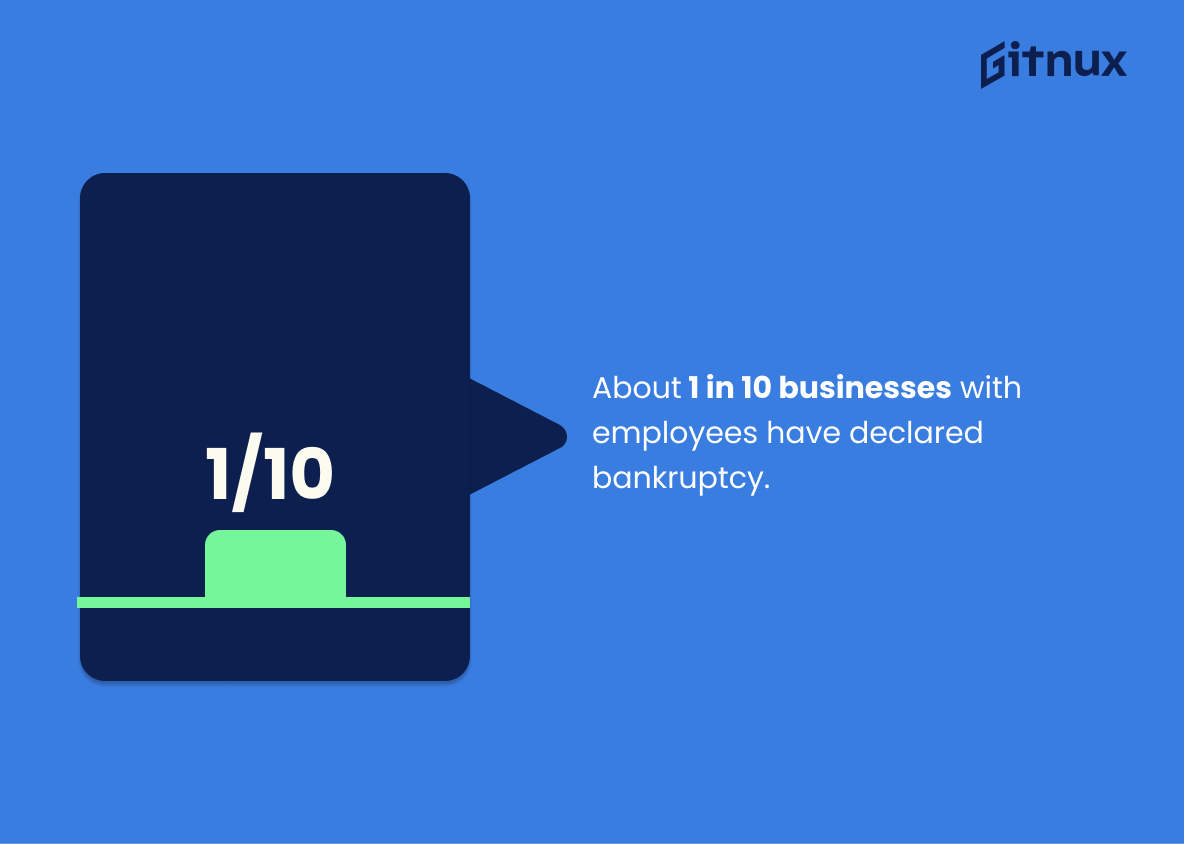Bankruptcy is a complex, daunting and often misunderstood financial stance. It illuminates a picture, not only of personal turmoil, but also intricate economic trends on local and global levels. Understanding the sheer magnitude and associated patterns of bankruptcy statistics can shed light on larger economic scenarios and be a guiding tool for strategic financial decision-making.
In this blog post, we delve deeper into the world of bankruptcy statistics, unpacking the critical numbers, identifying noteworthy trends, and conducting an insightful analysis. We aim to provide a comprehensive view of these figures, driving awareness on the impact of bankruptcy, aiding individuals, businesses, and policymakers in their financial strategies.
The Latest Bankruptcy Statistics Unveiled
In 2020, total bankruptcy filings in the United States were down 30% from the previous year.
Delving into the cascade of bankruptcy statistics, a sterling revelation manifests itself: a 30% reduction in bankruptcy filings in the United States in the year 2020, compared to its predecessor. This seismic shift in figures is not just a simple notation, it’s a beacon illuminating the fluidity of economic health and individual financial stability in the states.
In the grand web spun by bankruptcy statistics, one might wonder how this decrease influences our understanding. Let’s unravel this: It suggests a potential improvement in economic conditions, better financial planning, or even the impact of government intervention programs during this period. From it, one can extrapolate consumer behavior changes and the influence of macroeconomic factors on personal finance.
However, it should not be misinterpreted that the issue of bankruptcy is being eradicated. It may also reflect a restriction or reluctance in filing bankruptcy due to societal stigma or administrative complexities, which can lead to underreporting.
In the sweeping saga of bankruptcy statistics, this revelation of a 30% decrease deserves its own chapter. It is a beacon of learning, opening avenues for deep analysis by financial pundits, economists, and policy-makers and invites integral discussions on evolving economic conditions. It positions itself as a pivot point around which dialogue and discourse in this blog post can gravitate towards.
California had the highest number of bankruptcy filings in 2020, with 60,232 cases.
Examining the bankruptcy figures from 2020, we uncover a surprising heavyweight in this rather unfortunate league. Presenting California, emerging as the veritable epicenter of bankruptcy filings, contending with a staggering count of 60,232 cases. This data imbues a degree of gravitas to the state’s financial health, serving as a barometer for its economic turbulence during the tumultuous year.
The fact that the “Golden State” tops this list, paints a stark picture of the widespread financial distress, a key narrative in the broader dialogue surrounding bankruptcy trends. It imperatively suggests that even regions known for their wealth and prosperity are not immune to substantial economic woes.
In 2020, there were 544,463 total bankruptcy filings in the United States.
Appearing as a looming monolith, the figure, 544,463 stands tall as the representation of the total bankruptcy filings in the United States in the year 2020. This data point acts as both an anchor and a lighthouse in the tumultuous sea that is bankruptcy statistics. It solidifies the sheer gravity and scale of bankruptcy cases in a tangible number, bringing the abstract concept of financial discord into sharp focus. As a vestige of economic circumstances, individual tales of financial strain knit together to create this all-encompassing number.
It provides us with valuable insight into the economic health of the nation, guiding readers to assess the pervasiveness of financial distress and inform necessary policy changes. Furthermore, it offers prospective individuals a lens through which to compare their situation and assess the likelihood of their own financial fate leading them down the path of bankruptcy. This concrete figure, in its sobering magnitude, acts as the cornerstone upon which our understanding of bankruptcy in America is built.
On average, bankruptcy filers carried $200,000 in debt.
In the realm of bankruptcy statistics, the statistic about bankruptcy filers carrying an average debt of $200,000 paints a vivid picture of the overwhelming financial obstacles these individuals are grappling with. Imagine trying to crawl from beneath a mountain of $200,000.
It’s a striking reminder of the intense burden debt carries, further emphasizing the importance of financial management and the severity of bankruptcy situations. Delving deeper into these numbers can guide us in understanding the causes behind these fiscal crises and potentially inspire strategies to mitigate such high levels of debt, hence preventing potential bankruptcy filings.
Almost two-thirds of all bankruptcies were due to medical issues.
Delving into the crux of bankruptcy statistics, an astounding revelation emerges: medical issues were the catalyst for nearly two-thirds of all bankruptcies. This striking number effectively paints a picture of the economic turmoil that health problems can escalate, cementing the vital link between financial stability and health. Astronomically high healthcare costs can drive individuals to financial ruin, which is illustrated vividly through this statistic.
Revealing this underbelly of bankruptcy cases, we unearth the surprising, yet compelling intersection of health and financial stability, offering readers a new perspective to consider the significance and impact of medical expenses on an individual’s financial standing.
More than 50% of personal bankruptcies are caused by illness or medical bills.
In the realm of bankruptcy statistics, the narrative often orbits around the fiscal recklessness or mismanagement of funds. However, the stark reality that over 50% of personal bankruptcies are triggered by illness or medical bills underscores a crucial, yet often overlooked factor: health-related financial catastrophes. It sheds light on the undeniable intertwinement of health and financial stability, underscoring the role of unforeseen, and often uncontrollable, medical expenses in tipping individuals into the abyss of bankruptcy.
This statistic serves as a reality check, disrupting the blame game that victims of bankruptcy are often subjected to. It serves as a call to action for policymakers, healthcare providers, and insurance companies to reconsider current structures and explore solutions that could prevent medical expenses from devouring personal finances.
Furthermore, it beckons potential bankruptcy victims to learn more about their medical insurance policies and strategize against potential financial health crises. Thus, this statistic isn’t just a number—it’s a beacon in the dark, guiding the discussion and actions towards the largely uncharted territories in the landscape of bankruptcy.
Every year, around 800,000 Americans file for bankruptcy.
Presenting the intriguing figure of approximately 800,000 Americans filing for bankruptcy annually illuminates a central pivot of understanding for readers of a blog post on bankruptcy statistics. It not only underscores the magnitude of the issue in a personal and relatable way, but plants a vivid portrait of the financial landscape we navigate in the United States.
By integrating this statistic, we stir compelling discussions around financial health, societal norms, and economic policies. Moreover, it can also stir empathy, and possibly even catapult readers into action, as they may realize that they or their loved ones may be just a few missteps away from such a predicament. Finally, with a clear understanding of how pervasive bankruptcy is, readers can better appreciate the subsequent statistics, insights, and recommendations spelled out in the blog.
In 2019, the retail sector experienced a nearly 60% increase in bankruptcy filings.
Highlighting the staggering 60% surge in bankruptcy filings within the retail sector in 2019 decks out our story on Bankruptcy Statistics with a compelling perspective. It underscores the retail sector’s fragility and vulnerability to economic downturns, painting a vivid image of the financial hardships experienced widely within this specific sector.
This hard-hitting data point lends greater credence to the narrative, while simultaneously adding a human element by showcasing the susceptible nature of businesses to unforeseen market fluctuations. It’s an underscored clarion call of the precarious predicaments commonly faced, making it a dauntingly indispensable piece of information for our discourse.
More than 60% of bankruptcies are filed by people between the ages of 25 and 54.
Highlighting the statistic that over 60% of bankruptcies are filed by individuals aged 25 to 54 paints a compelling image on the canvas of bankruptcy statistics. It draws our attention towards the prime age group, often in the zenith of earning potential and familial obligations, being significantly impacted by bankruptcy.
It underlines a pressing issue that weaves into the societal fabric, affecting not only the debtors but also their dependents, employers, and the economy as a whole. Within the narrative of a blog post focusing on bankruptcy statistics, this fact carries the potential to spark discussion, provoke thought, and influence financial acumen among readers, leading them to comprehend the gravity of fiscal responsibility.
Chapter 7 bankruptcy filings comprised 58.3% of all filings in 2020.
Unearthing the significance of our statistic, it is like holding up a magnifying glass to the landscape of bankruptcy filings in 2020. We’re compelled to zoom in on the fact that Chapter 7 filings were not only a considerable component, but indeed, they made up a striking majority of 58.3%. This suggests a clear predominance of this type over other modes of bankruptcy, signaling the prevalently chosen route for debt relief in situations of financial instability.
Delving deeper, this statistic pushes us to explore why Chapter 7 is such a popular option, perhaps prompting discussions around its convenience, implications or its contrast against other bankruptcy chapters. Summarily, this impressive statistic lays the foundation for a comprehensive dissection of bankruptcy trends and debtor behavior in 2020.
In 2018, the total U.S. bankruptcy filings fell 2%, from 794,492 to 779,828.
Highlighting the drop in the total U.S. bankruptcy filings during 2018 lends credence to the evolving narrative of financial resilience for the nation. The 2% decrease, that took us from 794,492 to 779,828 filings, offers compelling evidence that more individuals and businesses were able to navigate financial challenges effectively in that period.
This particular data point presents a peek into the financial narrative of that year, sending out subtle threads of economic buoyancy and offering a beacon of hope to those grappling with the fear of financial ruin. It further provides an insightful foundation for analyzing and understanding the trends, triggers, and potential solutions to bankruptcy.
In 2020, there was a 14% increase in Chapter 11 filings from the previous year.
Delving into the realm of bankruptcy statistics, one cannot overlook the noteworthy escalation of Chapter 11 filings by 14% in 2020 from the year before. Existing as a vivid testament to the turbulent economic climate, this intriguing statistic essentially functions as a barometer for the financial distress experienced by businesses. Amidst the canvas of bankruptcy trends, this spike acts as a critical brushstroke, allowing us to understand and visually render the story of economic hardship suffered by many companies last year.
Analyzing such a significant rise not only sheds light on the health of the corporate sector but also underscores the wider economic implications stemming from factors such as the global pandemic. In turn, it can alert policymakers and stakeholders alike to take appropriate actions or consider necessary reforms. Therefore, the essence of this statistic goes beyond mere numbers, painting, instead, a larger picture that enriches the narrative around bankruptcy trends.
The percentage of billionaires filing for bankruptcy doubled from 0.33% in 1985 to 0.67% in 2014.
Highlighting a shift from 0.33% in 1985 to 0.67% in 2014 in the number of billionaires filing for bankruptcy offers a dramatic viewpoint on this complex financial dilemma. This compelling piece of data underscores the upward trend, even among the super-wealthy, dispelling any misconceptions that bankruptcy is only a predicament for those in the lower echelons of wealth.
Whether the causative factors are extravagance, bad investments, or changing economic climates, it encourages a deeper discussion on the overarching influences leading to this financial setback. It’s a persuasive starting point for exploring bankruptcy statistics more profoundly, sparking curiosity on this upswing particularly because it involves a demographic commonly perceived as invulnerable to financial downfall.
About 1 in 10 businesses with employees have declared bankruptcy.
A thoughtful audience might find themselves captivated by the revelation that approximately one in every ten businesses with employees have surrendered to bankruptcy. This robust figure serves as a stark reminder of the precarious financial landscape navigated by many businesses, demonstrating the fine line between success and financial ruin.
In the realm of bankruptcy statistics detailed in this blog post, this data point is a ghoulish beacon, simultaneously illuminating the risks present in business ownership and the volatile nature of economic environments. It underscores the imperative nature of sound financial management, effective risk evaluation, and proactive strategic planning to fend off the specter of bankruptcy.
60% of all bankruptcy filers have salaries of less than $30,000.
During the conversation around bankruptcy, statistics like ‘60% of all bankruptcy filers have salaries of less than $30,000’, can act as a stark reminder of the fiscal realities underpinning these situations. This numerical snapshot helps us uncover the veil of bankruptcy, revealing a strong correlation between low income levels and financial insolvency.
As we delve deeper into Bankruptcy Statistics, this understanding becomes vital. It not only renders a clearer picture of those most affected by such troubles but also prompts us to examine the systemic factors pushing many, despite their best efforts, into a daunting abyss of debts. Thus, it stands as a sentinel cautioning us about the widespread vulnerability within low-income groups, thereby informing the narrative on affordable financial counselling, preventive policy making, and insightful money-management strategies.
From 2005 to 2017, there was a 38% increase in the percentage of elderly people filing for bankruptcy.
Drawing attention to this intriguing rise in bankruptcy filings among the elderly population between 2005 and 2017 accentuates a dramatic shift in financial stability within the demographic. It underscores, in an unanticipated twist, how advancing years, traditionally seen as a time of established security, are increasingly mired in financial uncertainty and distress.
This statistic, which is quite alarming, provides a unique lens through which to view rising bankruptcy trends, with potential implications for societal and economical structures, thus enhancing the richness of a blog post covering Bankruptcy Statistics. It urges readers to delve deeper, not just into the numbers but the stories behind them.
Conclusion
Analyzing bankruptcy statistics serves as a vital barometer on the financial health of a nation’s citizens and businesses. It provides important insights on the effects of changes in economic, legal, and social factors. While it may be disheartening to witness high numbers of insolvencies, this data is crucial for developing effective financial planning, regulation, and assistance.
The figures may be stark, but they underscore the importance of financial literacy, wise borrowing practices, as well as responsible lending. By understanding these statistics, we can work towards reducing future bankruptcy rates and establishing a more stable economy.
References
0. – https://www.www.investopedia.com
1. – https://www.www.uschamber.com
2. – https://www.www.abi.org
3. – https://www.news.uscourts.gov
4. – https://www.www.cnbc.com
5. – https://www.papers.ssrn.com
6. – https://www.www.moneymanagement.org
7. – https://www.www.debt.org
8. – https://www.www.uscourts.gov
